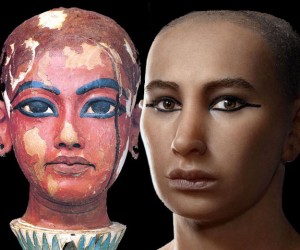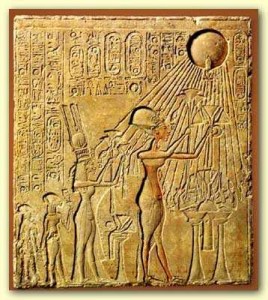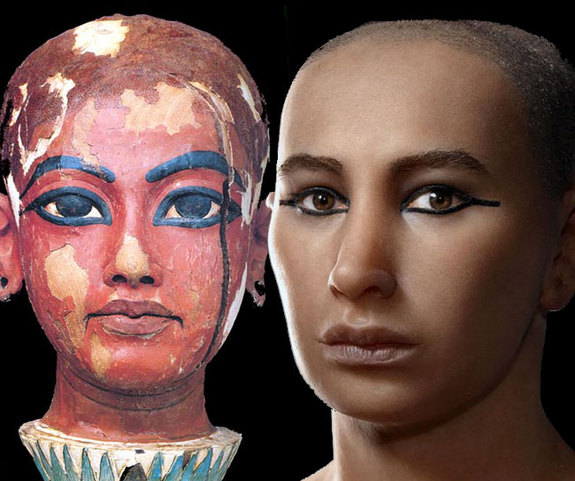Mummy Penis
It was a scene straight out of Indiana Jones. The date was November 5th, 1922. Leading the expedition was Howard Carter, a British archeologist who had spent decades excavating in Egypt. They were in the Valley of Kings. They saw twelve stairs leading down… and there it was. The long lost tomb of King Tut – the “boy-king” – who had ascended the throne at age 10. The tomb had not been disturbed in 3,200 years. It was full of treasures that have since awed millions around the world. But what they didn’t tell us was the story of King Tut’s penis.

Writing for LiveScience, Owen Jarus, reports that the pharaoh was buried without a heart (or a replacement artifact known as a heart scarab). Also, his mummy and coffin were covered in a thick layer of black liquid and, most unusually, his penis was mummified erect.
A new paper in the journal Etudes et Travaux by Egyptologist Salima Ikram, a professor at the American University in Cairo, proposes a new reason for the unusual burial of Tutankhamun. According to Ikram, the missing heart, the black color and the erect penis are all attempts to depict Pharaoh as Osiris, the Egyptian god of the underworld.
According to Egyptian myth, Osiris’ brother Seth butchered the black skinned god (hence the missing heart). When his sister-lover, Isis, found him, she physically reconstructed him, except for the missing penis that she could not locate. But she had a solution. She made herself into a hawk and hovered over the empty crotch of her dead lover, using her flapping wings to resurrect his penis. Isis then lowered herself onto the resurrected organ and was impregnated by the god. She then gave birth to the son of god, Horus, from whom all pharaohs claimed descent. But why did the man who mummified King Tut go to such trouble to depict him as Osiris?
As it turns out, King Tut’s father and mother were none other than Akhenaten and the beautiful Nefertiti who introduced monotheism to Egypt, in the form of the metaphoric worship of the sun, “Aten”. After 17 years of rule, the entrenched Egyptian priesthood managed to oust – maybe even murder – the pharaoh and his wife. One way or another, Akhenaten’s revolution was destroyed and forgotten. His son, King Tut, ruled under the thumbs of the priests and was buried by them. It was these priests who made sure that King Tut was depicted as Osiris, not Aten.

Which brings us back to the penis. In David Friedman’s words, “from the beginning of Western civilization, the penis was more than a body part. It was an idea.” Once a year, the pharaoh paid homage to another perpetually erect god – “Min”, the god of procreation. To this day, in Hebrew, “Min” means sex. In ancient Egypt, pharaoh would shout: “hail to thee, Min, that made his mother to bear!” In other words, pharaoh praised this god because he was so potent, that he fathered himself.
In the ancient world, the idea of the penis was connected to the idea of life, and the idea of the resurrected penis became a metaphor for the resurrected life i.e., the life that defeats death.
In Friedman’s words; “later another resurrection story would be preached in nearby Judea, then throughout the entire Mediterranean basin, about a man born of God and a virgin, who lived a life of chastity that offered a direct path to personal salvation.” Basically, the resurrected penis was replaced by the resurrected Messiah. The son of the god Osiris was replaced by the son of God. But now chastity played a role. Put differently, it can be argued that Pauline Christianity is a breakaway Jewish group that attempted to reconnect with certain Egyptian concepts about divinity, resurrection and life after death – but without the sex.
In other words, when Osiris became Jesus, the penis was written out of the story. The irony is that with the discovery of King Tut’s erect organ, the issue of sexuality and religion is, once again, being raised.
See also my blog at the Times of Israel.

